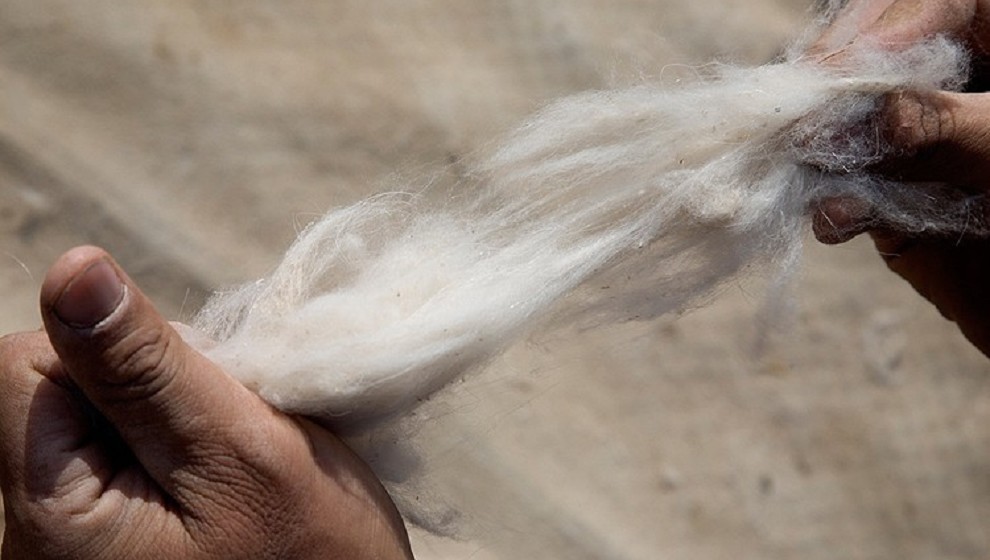Discovering What Material Is Cashmere and Its Role in High-End Clothing
Discovering What Material Is Cashmere and Its Role in High-End Clothing
Blog Article
Checking Out the Numerous Sorts Of Cashmere a Natural Fiber for Ultimate High-end
Cashmere, a natural fiber, is commonly connected with deluxe and convenience. The extra cost effective Chinese cashmere, the standard Scottish variation, and the premium Italian mix, all inform a various story of this exceptional fiber.
Comprehending the Elegant Nature of Cashmere
Cashmere, typically connected with luxury and convenience, holds an unique allure on the planet of natural fibers. This soft, lightweight product is coveted for its outstanding warmth and exceptional resilience. Unlike various other natural fibers, cashmere combines insulation with breathability, providing exceptional comfort throughout varying temperature levels. Its shiny coating and soft structure add to its high-end charm, justifying the costs rate that typically includes cashmere garments. In addition, cashmere's fundamental crease resistance and elasticity boost its worth, making it a favored option for premium apparel and accessories. Despite its fragile appearance, cashmere has a surprising resilience, able to retain its form and glamorous feel with time. This distinct mix of features seals cashmere's placement as a symbol of elegance and indulgence.
Just What Is Cashmere and Where Does It Originate from?

Offered these exceptional high qualities, one might question the origin and make-up of this luxurious fiber. Cashmere is stemmed from the soft undercoat of cashmere goats, primarily discovered in Mongolia, China, Iran, and Afghanistan - is cashmere a natural fiber. These goats are adapted to extreme climatic problems, generating a very great, soft underfur as a defense versus the bitter cold. This underfur, or undercoat, is what is gathered for cashmere. Each springtime, when the goats naturally lost their winter season layer, farmers brush out the fine underhair, leaving the coarser hair behind. This meticulous process adds to the deficiency and high price of cashmere. With its origin in the harsh landscapes of Asia, cashmere is a testimony to nature's capacity to produce high-end from misfortune.
Translating the Different Types of Cashmere
Comprehending the different kinds of cashmere is vital to appreciating the top quality and distinct attributes of this lavish fabric. Usually, cashmere is classified right into three types: raw, virgin, and reused. Raw cashmere is directly gotten from the goat and is unprocessed. This type frequently has pollutants such as dirt and crude hair. Virgin cashmere, on the various other hand, is the pure, unrecycled material that look at these guys is spun into yarn for the very first time. It is the softest and most elegant. Ultimately, recycled cashmere is made from virgin material that has been previously made use of. It is re-spun and utilized in generating lower-cost cashmere items. Deciphering these types is the initial step in comprehending the exclusivity and worth of cashmere.

The Special Attributes of Each Sort Of Cashmere
Having explored the different groups of cashmere, it comes to be evident that each type flaunts its distinct collection of qualities. Mongolian cashmere, for instance, is renowned for its superior top quality, due to Mongolia's rough winters that produce longer and finer fibers. Conversely, Chinese cashmere is typically a lot more cost effective, though its shorter fibers can minimize resilience.
Why Cashmere Is the Embodiment of Luxury in vogue
Cashmere holds a well-regarded placement in the world of style, pertained to as an icon of deluxe and refinement (is cashmere a natural fiber). Cashmere is acquired from the great undercoat of Himalayan goats, recognized for their premium top quality fiber. Cashmere's unparalleled convenience and longevity make it a desired product in the creation of high-end garments.
The Process of Making Cashmere: From Goat to Garment
The journey of cashmere, from being an undercoat of a Himalayan goat to an elegant garment, is an elaborate one. With the introduction of spring, farmers in Mongolia and China collect the woollen by brushing the goats, making sure no harm is done. The acquired woollen includes rugged outer hair and soft downy undercoat. This mix is then painstakingly divided, with just the soft down utilized for cashmere. This raw cashmere is washed, dyed and spun right into yarn. The thread is then woven or knitted into fabrics. The final action involves cleaning and pushing to give the textile its characteristic gentleness and warmth. From goat to garment, each action is a testament to the ability, creativity and patience associated with crafting cashmere.

Verdict
Finally, cashmere, with its natural elegance and unparalleled comfort, reigns supreme worldwide of luxury style. The diversity in types, varying from the soft Mongolian, lightweight Indian Pashmina, budget friendly Chinese, traditional Scottish, see this to the vivid Italian, exposes the versatility of this all-natural fiber. The scrupulous view it now procedure of transforming it from a goat to a garment further contributes to its exclusivity, making cashmere the embodiment of elegance and deluxe.
Cashmere, a natural fiber, is frequently linked with high-end and convenience (is cashmere a natural fiber).Cashmere, usually linked with luxury and convenience, holds a distinct attraction in the world of all-natural fibers. Unlike other all-natural fibers, cashmere combines insulation with breathability, providing unparalleled convenience throughout varying temperature levels. Cashmere is obtained from the soft undercoat of cashmere goats, largely found in Mongolia, China, Iran, and Afghanistan. Cashmere is obtained from the great undercoat of Himalayan goats, understood for their premium quality fiber
Report this page